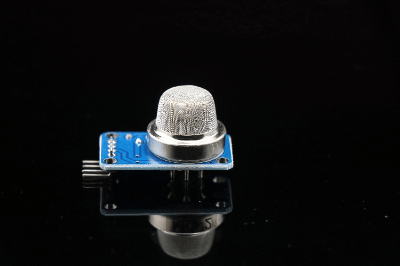What Is a Gas Sensor?

Gas Sensors are sensors used to detect invisible gases present in the air.
They are used in a wide range of industries such as industrial equipment, automotive equipment, and home appliances due to the use of IoT, environmental protection, and energy conservation in recent years. In addition, they are also used to detect odor components and air pollution.
Gas Sensors can detect various compounds by utilizing chemical reactions and physical phenomena. Gas Sensor detection methods include semiconductor, catalytic combustion, electrochemical, and infrared methods.
Applications of Gas Sensors
Gas Sensors have a wide range of applications and are used in a variety of industries, including industrial equipment, automotive equipment, and home appliances. Some examples are shown below:
- Industrial equipment
Monitoring air pollution, chemical plant production, and exhaust gas emissions from combustion engines to prevent gas accidents. - Automotive
Gas Sensors are used as exhaust gas sensors such as oxygen sensors, NOx sensors, and PM sensors in exhaust gas purification systems to address environmental issues. - Home appliances
Gas Sensors are used in air purifiers to detect odors of cigarettes, cosmetics, alcohol, pets, etc.
Principle of Gas Sensor
There are various types of Gas Sensors, each with a different principle. The following is an explanation of the principles of the four most common types of Gas Sensors:
1. Semiconductor Gas Sensor
Semiconductor gas sensors are sensors that harness the properties of semiconductor materials, and there are two main types. The first type, known as adsorption-type gas sensors, relies on the change in resistance that occurs when a gas is adsorbed on the surface of an oxide semiconductor. Materials such as tin oxide are commonly used.
The second type of semiconductor gas sensor is the redox type. This sensor utilizes the property of resistance change that occurs when the atmosphere becomes either reducing or oxidizing. Gases are detected based on the change in resistance caused by the adsorption of the gas to be detected on the surface of the metal oxide semiconductor.
2. Catalytic Combustion Gas Sensor
Catalytic combustion type Gas Sensors utilize the phenomenon that combustible gases such as hydrogen, hydrocarbons, and carbon monoxide react with oxygen in the air by an oxidation catalyst and generate heat during catalytic combustion. Since the amount of heat generated is proportional to the gas concentration, this type of sensor is used for sensing combustible gases.
3. Electrochemical Gas Sensor (Constant Potential Electrolysis Type)
Electrochemical Gas Sensor is a gas sensor that uses a gas permeable membrane to take in gas into an electrolyte to produce an electrochemical reaction of the gas. It consists of a detector electrode, a counter electrode, and an electrolyte in which a redox reaction takes place. When the gas to be detected is present, a chemical reaction occurs on the catalyst, and the short-circuit current when the sensing electrode and counter electrode are connected is quantified.
4. Infrared Gas Sensor
Infrared Gas Sensors are sensors that make use of the fact that many gases absorb specific wavelengths. They are also called NDIR (non-dispersive infrared) Gas Sensors.
Types of Gas Sensors
The following describes the types of Gas Sensors and the gases they detect:
1. Semiconductor Gas Sensor
LP gas, city gas, carbon monoxide, hydrogen gas, oxygen, alcohol, Freon, etc.
2. Contact Combustion Type Gas Sensor
Combustible gases such as hydrogen gas, hydrocarbon gas, carbon monoxide, etc.
3. Electrochemical Gas Sensor
Carbon monoxide, semiconductor doping gases such as arsine and osfin, NOx, sulfide gases
4. Infrared Gas Sensor
Carbon dioxide, carbon monoxide, carbon-hydrogen, refrigerant gas, nitric oxide, sulfur dioxide, sulfur hexafluoride, ethanol, etc.
5. Thermal Conductivity Type Gas Sensor
Hydrogen gas, carbon dioxide, helium gas, methane gas